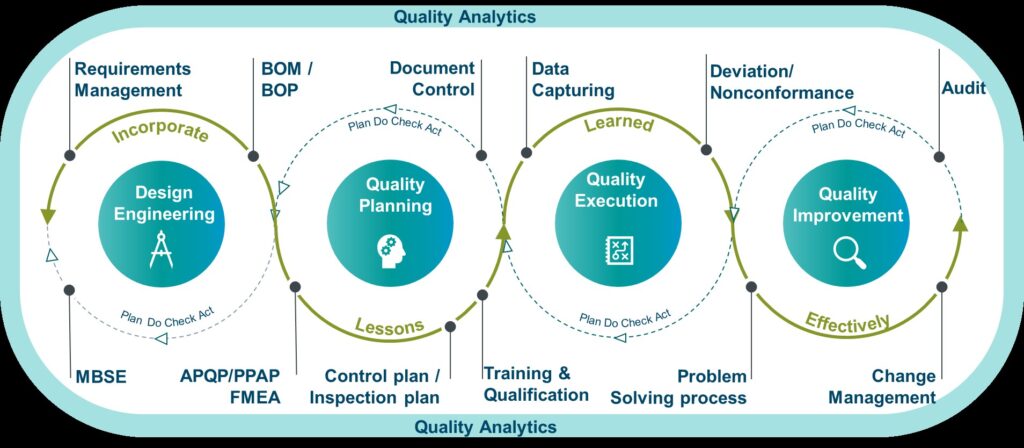Quality Management in the digital era – connect the disconnect across the value chain

“Uncontrolled variation is the enemy of Quality[i]” – Edward Deming.
Manufacturers are gearing towards the phenomenon of mass customization and personalization. This brings a multitude of complexities and uncertainties that comes with product and process variation, global to local manufacturing and supply chain dynamics.
With quality as one of driving factors, manufacturers are trying to navigate these complexities and uncertainties with digital transformations. The drive is to remove the barriers and connect the typically disconnected quality processes within the organization to create a flexible and agile environment.
Quality is always intertwined across the departments, processes and team members. This mandates a new way of thinking to drive the culture of quality, where each member takes ownership with pride and has full accountability to results of their contributions. In the digital era, speed and innovation go together only when agility in the organization is fueled by supporting tools, systems and processes.
But quality is traditionally managed in isolation with several adhoc manual touchpoints, tools and sub-systems across the processes.
Even with solid quality management policies and processes, if the supporting systems are in isolation, quality adherence and, thus driving culture of quality, will be a big hindrance.
In an era where agility, speed to innovation, and meeting ever changing customer and consumer demands are paramount, isolated systems will create more challenges in managing the cost of quality – that ranges across waste, profitability and reputation.
To connect the typically disconnected quality processes across the value chain (namely R&D, supplier, manufacturing, delivery, service and customer) – a content, collaboration and change management backbone is critical. Especially when new products with multitudes of variations (for personalization) are introduced at an accelerated pace, collaboration backbone plays a vital role.
This is achieved when quality in the digital era is managed via the application of traditional and Industrie 4.0 technologies (IIoT, Advanced Analytics, Cloud, Digital Twins) to improve quality lifecycle processes and outcomes.
Connect the traditionally disconnected quality processes

Look for more updates on our portfolio and how it helps your organization in upcoming announcements and blog series focusing on different quality processes across value chain.
[i] W. Edwards Deming (1980) cited in: Chang W. Kang, Paul H. Kvam (2012) Basic Statistical Tools for Improving Quality. p. 19


